Do you remember when a Dalmatian dog could be seen riding on a fire truck? Or how about the Disney film “101 Dalmatians� I doubt that as you were watching these magnificent creatures you ever thought that there could be such a thing as hip dysplasia in Dalmatians.

Dalmatians were bred to chase horse-drawn carriages and were used for this purpose long before they became associated in people’s minds with fire engines and firemen. They are tough, dependable dogs who are noted for their robust stamina. If you enjoy jogging, a Dalmatian is your perfect companion no matter how far your daily jog takes you as they are noted for their ability to keep up with the most passionate runner.
Well-trained Dalmatians are gentle and have a quiet bearing. However, they can be energetic and rowdy at times, owing to their incredible energy and stamina, and for this reason they are not necessarily the best pets to own if you have very small children. They do make excellent playmates for older children, and their strong protective instincts make them very effective guard dogs for the entire family.
Dalmatians are people-oriented dogs and should not be left alone in the house for any extended period of time. If they don’t receive enough attention and exercise they become destructive, digging up lawns and gardens, chewing on things you’ve left lying around the house, and worst of all, they’ll bark incessantly if you ignore them for too long.
Dalmatians are wanderers, and if allowed to roam, they may disappear for days, busy exploring your neighborhood or even half the town. It’s essential that you have a fenced-in yard if you plan on letting them cavort around outside when not on a leash.
Dalmatians mainly shed their coats in the spring and fall, but will keep shedding all year round. Daily brushing of their coats becomes a necessity if you don’t want to spend your days vacuuming the carpets and furniture. Dalmatians are sensitive to cold weather and shouldn’t be left outside in the wintertime.
Dalmatians date back to ancient Egypt where they were used as guard dogs and dogs of war. But Dalmatians really made their name in the 19th century as “coach dogs†due to their natural swiftness and agility. Their kinship with horses made them well suited for following their owner’s horse-drawn carriages and guarding the horses and carriages when the owners went inside.
Dalmatians are medium-sized, well-proportioned dogs with distinctive black spots on a white coat. Most children are familiar with them because they’ve admired their escapades in the Disney movies “Lady and the Tramp†and “101 Dalmatiansâ€. Dalmatians have strong muzzles and deep-set eyes. Their strong, arched necks are supported by their deep chests and level backs. Their tails curl up slightly and they have long, well-muscled legs with rounded feet. Their coats are short, dense and sleek.
One interesting fact most people are not aware of unless they’ve owned a Dalmatian puppy, is that Dalmatians are solid white when they are born and develop their distinctive black spots as they get older.
Dalmatians are very active dogs and must be exercised every day. They make wonderful pets and excellent companions. They are very charming dogs and will follow you everywhere, wanting to be with you all the time.
A healthy Dalmatian can live as long as 12 years. Unfortunately, they are prone to developing hip dysplasia as they grow older.
Hip dysplasia in Dalmatians is a genetic disease that primarily affects large and giant breeds of dogs like the Dalmatian but can also affect medium-sized breeds and occasionally small breeds. It is primarily a disease of purebreds, although it can also occur in mixed breeds.
To understand hip dysplasia and the resulting arthritis, you need a basic understanding of how the dog’s hip joint is affected. The hip joint is comprised of a ball and socket that forms the attachment of the hind leg to the body. The ball portion is the head of the femur and the socket is located on the pelvis. In a normal hip joint the ball rotates freely within the socket. The bones are shaped to perfectly match each other with the socket surrounding the ball. To strengthen the joint, the two bones are held together by a strong ligament. The joint capsule, a strong band of connective tissue, circles the two bones to provide added stability.
This is an example of a normal hip joint:

Hip dysplasia is linked to abnormal joint structure and a laxity of the muscles, connective tissue, and ligaments that would normally support the dog’s hip joints. As the disease progresses, the articular surfaces of the two bones lose contact with each other. This separation of the two bones within the joint causes a drastic change in the size and shape of the articular surfaces.
Most dogs who eventually develop hip dysplasia are born with normal hips, but due to their genetic make-up the soft tissues surrounding the joint develop abnormally. This leads to the symptoms associated with hip dysplasia. The disease may affect both hips, or only the right or left hip.
This is an example of a hip joint showing the effects of hip dysplasia:

The symptoms of hip dysplasia cause afflicted dogs to walk or run with an altered gait, similar to a bunny-hop. They begin to resist any movement that requires full extension or flexion of the rear legs. They will experience stiffness and pain in their rear legs after exercising and on first rising in the morning. Climbing stairs becomes difficult if not impossible. Some dogs will limp and are less willing to participate in normal daily activities, including walks they formerly enjoyed.
It appears that the amount of calories a dog consumes, especially during its fast-growth period from three to ten months, has the biggest impact on whether or not a dog genetically prone to hip dysplasia will develop the disease.
Obesity can increase the severity of the disease in dogs that are genetically susceptible and the extra weight will intensify the degeneration of a dog’s joints and hips. Dogs who are genetically prone to hip dysplasia and also are overweight, are at a much higher risk of developing hip dysplasia and eventually osteoarthritis.
Exercise can be another risk factor. Dogs genetically susceptible to hip dysplasia may have an increased incidence of the disease if they are over-exercised at a young age. Moderate exercise like running and swimming is best for exercising young dogs.
Because hip dysplasia is primarily an inherited condition, there are no products that can prevent its development. Through proper diet, exercise, and a daily regimen of Winston’s Joint System, you can slow, and sometimes halt, the progression of these degenerative joint diseases while providing your dog with relief from its pain. Winston’s provides many of the raw materials essential for the synthesis of the joint-lubricating synovial fluid as well as the repair of articular cartilage and connective tissue.
You might also want to consider providing your dog with an orthopedic bed like the Canine Cooler Bed which distributes the dog’s weight evenly and reduces pressure on its joints. The Canine Cooler Bed uses revolutionary SoothSoft Technology to give your dog the very best in comfort, and the fluid-enhanced design offers a dry, cooling effect with superior cushioning and support. It’s perfect for dogs with hip dysplasia or arthritis.
If owners insisted on only purchasing an animal whose parents and grandparents were certified to have good or excellent hips, and if breeders only bred these first-rate animals, then the majority of the problems caused by hip dysplasia would be eliminated.
If you are looking to purchase a Dalmatian now or in the future, the best way to lessen the possibility of getting a dog that will develop hip dysplasia is to examine the incidence of hip dysplasia in the dog’s lineage. If at all possible, try to examine the parents and grandparents as far back as three or four generations.
There are different assumptions on how to prevent the progression of hip dysplasia in Dalmatians. Poor nutrition, inadequate or improper exercise, and increased body weight may all contribute to the severity of osteoarthritis after the hip dysplasia has developed. By watching the calories your puppy or young dog consumes and preventing obesity in your dog, allowing only non-stressful types of exercise, and a daily regimen of Winston’s Joint System, are the best things you can do for your dog.
Improve The Lives Of Your Dogs By Treating Hip Dysplasia
Hip Dysplasia in dogs is a disease that affects the hip joint that attaches a dog’s hind leg to its body. The hip joint is a ball-and-socket joint with the ball portion being the head of the femur (the main bone in the thigh) and the socket which is attached to the dog’s pelvis.

In a healthy, normal joint, the ball rotates easily within the socket. The hip joint is strengthened by a strong ligament that attaches the femur head directly to the socket. The joint capsule is a very strong band of connective tissue that circles the two bones and provides stability for a dog’s rear legs. In healthy dogs, the area where the bones actually touch each other is smooth and cushioned with a layer of spongy cartilage. The hip joint also contains a thick fluid that keeps the joint lubricated. In a dog with normal hips, all of these components work together and help the joint function smoothly to support the dog’s stability.
Hip dysplasia is a result of abnormal joint structure in the dog’s hip which results in the muscles becoming slack; it also affects the connective tissue and ligaments that support the hip joint. As the dog’s hip joint continues to deteriorate, the surfaces of the two hip bones start to separate in the joint and cause structural changes in the surfaces of the bone. As the cartilage is progressively worn away, the pain becomes intense when the dog stands or walks.
Most dogs are born with normal hips and will never develop this debilitating disease unless their genetic background includes a predisposition for hip dysplasia or arthritis. Hip dysplasia will sometimes affect both the right and left hip joints but more often only affects one hip.
Hip dysplasia symptoms usually don’t appear until a dog reaches middle-age or older. The disorder will get worse until all normal movements of the dog’s legs become too painful to endure. Surgery is sometimes recommended by veterinarians but is costly and not often advised if a dog is older. Rimadyl is a pain killer vets sometimes prescribe for dogs suffering from hip dysplasia and/or arthritis.
There are many pros and cons about giving a dog Rimadyl for hip dysplasia and arthritis pain. As a responsible pet owner, it would be a very good idea to research this drug as thoroughly as you can before giving your dog this medication. A much safer treatment, and one that many owners agree is more effective, is to put your dog on a daily regimen of Winston’s Joint System, an all-natural formula developed by a Naturopathic Doctor to heal his own beloved dog who suffered from hip dysplasia. For more than 20 years this proven formula has been giving relief from pain and stiffness to all breeds and ages of dogs.
The symptoms of hip dysplasia are almost identical to the symptoms of arthritis. A dog with arthritis will limp when walking and may avoid any movement that requires full extension or the flexing of its rear legs. The dog will also experience stiffness and pain in the rear legs after exercising or when awakening in the morning. Climbing stairs will become difficult or impossible. As hip dysplasia increasingly impairs the dogs movement it will lose most of its muscle tone and may need assistance in getting up and lying down.
Hip dysplasia is primarily a disease of large breeds like Golden Retrievers, Labrador Retrievers, German Shepherds, Rottweilers, Saint Bernards, and Great Danes. The disease can affect medium-sized dogs also but very rarely affects smaller dogs. Hip dysplasia occurs most often in purebred dogs but is known to develop in mixed breeds if the parents were prone to developing hip dysplasia.
Obesity will increase the pain and inflammation of hip dysplasia in dogs that are genetically predisposed to the disease. An overweight dog genetically prone to hip dysplasia is at a much higher risk of developing hip dysplasia.
Exercise is sometimes a factor in the development of the disease. Dogs that are genetically predisposed to hip dysplasia will have an increased incidence of hip dysplasia or arthritis if over-exercised when they are puppies or young adults.
Find Out More About Hip Dysplasia & Your Dogs Health.
Keeshonds are easy dogs to live with. They are always happy and full of “energyâ€. They are naturally loving dogs, gentle and mellow, and especially friendly to children and other pets. They are easy to train and once trained, are very obedient.

Keeshonds form deep bonds with their owners and develop an almost human-like understanding of emotions and moods. If you’re having a really bad day, your Keeshond will more than likely sense your tension and offer comfort. If that sounds funny or odd to you, ask anyone who has a Keeshond as a pet and listen to the stories they can tell you about their dogs.
Keeshonds do need a lot of attention, and if they are ignored for any length of time they get very emotional and agitated.
They easily adjust to living in an apartment or small condo but still require several brisk walks every day. If you live in a house with a fenced yard, they’ll run around and around, really enjoying themselves.
Keeshonds have thick, bushy coats which is why they like cooler climates. On hot days they need plenty of shade or be kept indoors with air-conditioning. Their thick coats need daily brushing, and they shed fairly heavily in the spring and fall.
The Keeshond comes from an Arctic dog breed with traces of Samoyed, Chow Chow and Pomeranian. They were originally bred to guard river barges along the Rhine River in Germany, and for many years they worked on Dutch riverboats where they were valued for their sturdiness, intelligence and resourcefulness. They make excellent watchdogs because they are extremely alert, protective and cautious. It takes very little to cause them to bark.
Keeshonds are small dogs covered in long, thick coats with manes around their necks. In this respect they resemble one of their ancestors, the Samoyed. Their wedge-shaped heads have medium-length muzzles and erect, triangle-shaped ears. They have dark, chestnut eyes with thin rims that give them the appearance of wearing glasses. Their long, straight coats come in mixed patterns of gray, black and white.
A healthy Keeshond can live as long as 15 years. They are considered a healthy breed, but common health problems include heart and eye disorders, and hip dysplasia.
Hip dysplasia is a genetic disease that primarily affects large and giant breeds of dogs but can also affect medium-sized breeds and occasionally small breeds. It is primarily a disease of purebreds, although it can also occur in mixed breeds.
To understand hip dysplasia and the resulting arthritis, you need a basic understanding of how the dog’s hip joint is affected. The hip joint is comprised of a ball and socket that forms the attachment of the hind leg to the body. The ball portion is the head of the femur and the socket is located on the pelvis. In a normal hip joint the ball rotates freely within the socket. The bones are shaped to perfectly match each other with the socket surrounding the ball. To strengthen the joint, the two bones are held together by a strong ligament. The joint capsule, a strong band of connective tissue, circles the two bones to provide added stability.
Example of a normal hip joint:

Hip dysplasia is linked to abnormal joint structure and a laxity of the muscles, connective tissue, and ligaments that would normally support the dog’s hip joints. As the disease progresses, the articular surfaces of the two bones lose contact with each other. This separation of the two bones within the joint causes a drastic change in the size and shape of the articular surfaces.
Example of an abnormal hip joint:

Most dogs who eventually develop hip dysplasia are born with normal hips, but due to their genetic make-up the soft tissues surrounding the joint develop abnormally. This leads to the symptoms associated with hip dysplasia. The disease may affect both hips, or only the right or left hip.
The symptoms of hip dysplasia cause afflicted dogs to walk or run with an altered gait, similar to a bunny-hop. They begin to resist any movement that requires full extension or flexion of the rear legs. They will experience stiffness and pain in their rear legs after exercising and on first rising in the morning. Climbing stairs becomes difficult if not impossible. Some dogs will limp and are less willing to participate in normal daily activities, including walks they formerly enjoyed.
It appears that the amount of calories a dog consumes, especially during its fast-growth period from three to ten months, has the biggest impact on whether or not a dog genetically prone to hip dysplasia will develop the disease.
Obesity can increase the severity of the disease in dogs that are genetically susceptible and the extra weight will intensify the degeneration of a dog’s joints and hips. Dogs who are genetically prone to hip dysplasia and also are overweight, are at a much higher risk of developing hip dysplasia and eventually osteoarthritis.
Exercise can be another risk factor. Dogs genetically susceptible to hip dysplasia may have an increased incidence of the disease if they are over-exercised at a young age. Moderate exercise like running and swimming is best for exercising young dogs.
Because hip dysplasia is primarily an inherited condition, there are no products that can prevent its development. Through proper diet, exercise, and a daily regimen of Winston’s Joint System, you can slow, and sometimes halt, the progression of these degenerative joint diseases while providing your dog with relief from its pain. Winston’s provides many of the raw materials essential for the synthesis of the joint-lubricating synovial fluid as well as the repair of articular cartilage and connective tissue.
You might also want to consider providing your dog with an orthopedic bed like the Canine Cooler Bed which distributes the dog’s weight evenly and reduces pressure on its joints. The Canine Cooler Bed uses revolutionary SoothSoft Technology to give your dog the very best in comfort, and the fluid-enhanced design offers a dry, cooling effect with superior cushioning and support. It’s perfect for dogs with hip dysplasia or arthritis.
If owners insisted on only purchasing an animal whose parents and grandparents were certified to have good or excellent hips, and if breeders only bred these first-rate animals, then the majority of the problems caused by hip dysplasia would be eliminated. If you are looking to purchase a Keeshond now or in the future, the best way to lessen the possibility of getting a dog that will develop hip dysplasia is to examine the incidence of hip dysplasia in the dog’s lineage. If at all possible, try to examine the parents and grandparents as far back as three or four generations.
There are different assumptions on how to prevent the progression of hip dysplasia in Keeshonds. Poor nutrition, inadequate or improper exercise, and increased body weight may all contribute to the severity of osteoarthritis after the hip dysplasia has developed. By watching the calories your puppy or young dog consumes and preventing obesity in your dog, allowing only non-stressful types of exercise, and a daily regimen of Winston’s Joint System, are the best things you can do for your dog.
Get The Facts On Hip Dysplasia & Your Dogs Health.
If you notice that your older dog is exhibiting behavior problems, it may be senility or cognitive dysfunction that accounts for the behavior. Senility and cognitive dysfunction affects dogs in the same way that Alzheimer’s disease affects humans. Recent medical studies have shown that many senior dogs with senility and cognitive dysfunction problems have lesions in their brains that are very similar to what is seen in Alzheimer’s patients.

Studies undertaken by major companies in the pet industry have revealed that 62% of all dogs ten years of age and older will experience at least some of the following symptoms, which usually indicate canine cognitive dysfunction:
* Confusion or disorientation that causes a dog to get lost in its own yard, or to wander aimlessly around the house, and become trapped in a corner or behind furniture.
* An obvious decreased level of activity.
* Constant pacing during the night, or being unable to sleep at night.
* Anxiety and increased irritability.
* An increase in barking, whining, or howling.
* A decreased ability to perform common tasks or to respond to its owners’ commands.
* Long periods of inattentiveness, appearing to just stare into space.
* A continuing inability to recognize family members or old friends.
To make the correct diagnosis of senility or cognitive dysfunction, a veterinarian first has to rule out other possible causes of the dog’s behavior problems. A marked decrease in activity may not be caused by senility or cognitive dysfunction, but might be due to advancing arthritis or hip dysplasia that could be successfully treated with Winston’s Joint System. Dogs who suffer from severe joint diseases such as arthritis, bursitis, osteochondrosis (OCD), hip dysplasia or other degenerative problems with the shoulders, elbows and hocks are able to experience immediate and long-term relief without dangerous drugs when given a daily regimen of Winston’s Joint System. Winston’s is a combination of three, totally-natural whole food supplements developed by a Naturopathic Doctor for his own dog. There are no side-effects and there are no dosage problems because your dog’s body uses only what it needs.
If it is determined that your dog does not have physical problems and is suffering from senility or cognitive dysfunction, a vet will probably prescribe one of the major drugs, Selegiline or Anipry. These drugs are not a cure for senility or cognitive dysfunction but can alleviate some of the symptoms. If a dog responds well to either of these drugs, it will need to be given the medication every day for the rest of its life. There are some unpleasant side effects with these two drugs so it’s important to ask your vet what these side effects are and how dangerous they might be to your pet before you decide on administering these drugs to your dog.
An excellent supplement that can help aging dogs is Winston’s Senior Complete Multi vitamin and mineral supplement. This is a powerful and complete once-daily multi vitamin for dogs that are five years and older. This complete multi vitamin contains almost 50 active ingredients from the healthiest sources available.
It’s vitally important that dogs who are diagnosed with senility or cognitive dysfunction continue to be exercised and played with on a regular basis. If your senior dog is experiencing behavior problems, schedule an appointment with your veterinarian to have your dog tested and evaluated to determine if senility or cognitive dysfunction is accounting for the drastic change in behavior.
Early intervention and proper, loving care can help your dog have a more happy and healthy life in its senior years.
Arthritis in dogs is a debilitating condition affecting approximately 20% of all adult dogs. Arthritis generally develops when a dog is older but it can also affect younger dogs. In order to provide a better quality of life for a dog with arthritis a dog owner needs to understand arthritis, its symptoms, and what treatments are available for an affected dog.

Arthritis is a general term that is used to describe several different diseases that basically affect a dog’s joints in similar ways. A simple way to describe and to understand arthritis in a dog is that the disease causes painful inflammation of the dog’s joints. Because arthritis occurs in about one in five adult dogs, it is one of the most common diseases treated by veterinarians.
Since arthritis itself is more of a general condition rather than one specific disease, many other diseases like hip dysplasia, OCD, and degenerative joint disease are linked to it. A dog with arthritis will usually develop hip dysplasia or degenerative joint disease as the arthritis progresses.
Arthritis associated with degenerative joint disease is caused by repetitive pressure on a dog’s bones and is common to aging dogs. This type of arthritis can occur in younger dogs if they are genetically predisposed to the affliction. However, it’s more common in older dogs because their joints become lax after many years of use. Because this type of arthritis is normally age-related, the treatment options are limited to alleviating the symptoms.
In some cases, the arthritis is associated with an autoimmune disorder where the immune system mistakenly begins attacking the dog’s muscles and bones, thereby reducing the functioning of the joints and causing inflammation and irritation. There often is a genetic predisposition toward this type of arthritis in certain breeds. Whether or not an affected dog is among those breeds is not important; it is imperative that a veterinarian determine why the dog’s immune system is malfunctioning and start the appropriate treatment as soon as the malady is diagnosed.
Signs and symptoms of arthritis in a dog will usually manifest over time, unless an autoimmune disease is the cause. Also, these signs or symptoms are often mistaken for other disorders.
The following symptoms may indicate arthritis in a dog
* Limping
* Obvious favoring of one leg over the other
* Avoiding the use of stairs
* A painful appearance when walking
* A progressive unwillingness to exercise, play, or go for the usual walk
* Urinating or defecating inside the house after being housebroken for many years.
A veterinarian will decide on treatment options after conducting several tests on the dog to try to determine what factors are contributing to the disorder. The tests will include x-rays, blood work and occasionally an ultrasound.
Dietary restrictions are often an integral part of any treatment for arthritis, since a reduction in weight helps alleviate some of the symptoms of arthritis in overweight dogs. A regular, easygoing exercise routine will be recommended to prevent too much pressure being placed on the dog’s weakening joints.
Non-steroidal, anti-inflammatory medications like Rimadyl are sometimes used to help reduce inflammation in the dog’s joints. Rimadyl is a pain killer that veterinarians sometimes prescribe for dogs suffering from arthritis.
There are many pros and cons about giving a dog Rimadyl for arthritis pain. As a responsible pet owner, it would be a very good idea to research this drug as thoroughly as you can before giving your dog the medication.
A much safer treatment, and one that many owners and vets agree is more effective, is to start an arthritic dog on a daily regimen of Winston’s Joint System, an all-natural formula developed by a Naturopathic Doctor to heal his own beloved dog who suffered from arthritis and hip dysplasia. This proven formula has been giving relief from pain and stiffness to all breeds and ages of dogs for over 20 years with remarkable results.
Arthritis in dogs can have many causes and the symptoms are sometimes misdiagnosed as being another condition or ailment of an affected dog. The treatments for arthritis are limited, and many dog owners prefer the safety of a supplement like Winston’s Joint System rather than the sometimes questionable efficacy of a drug like Rimadyl.

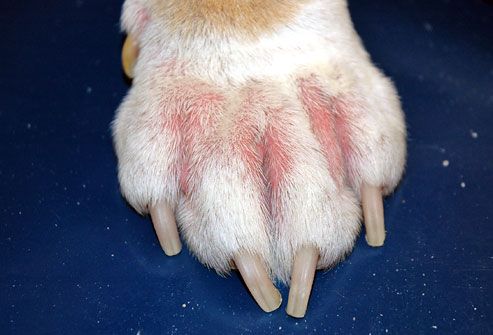

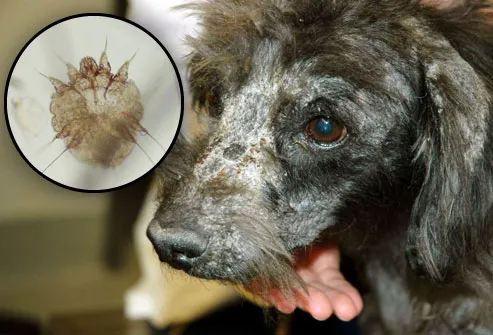
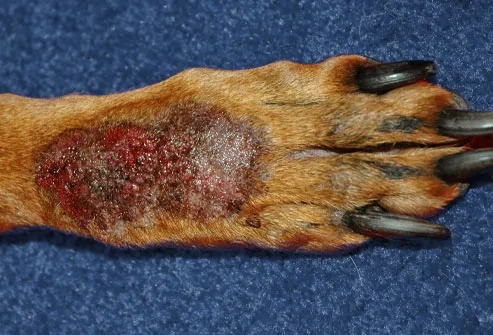

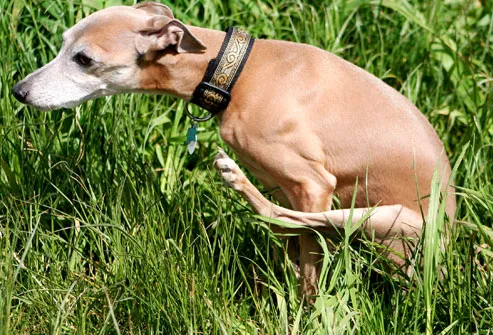
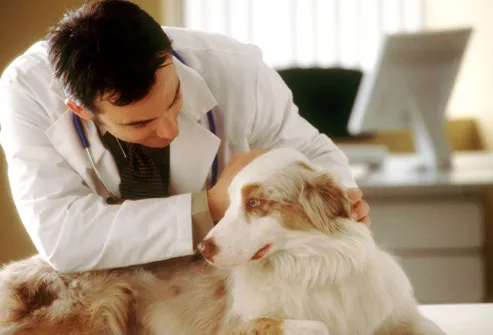










![Reblog this post [with Zemanta]](http://img.zemanta.com/reblog_e.png?x-id=9576ae60-b6e4-487f-98d2-dc500a4245e7)



